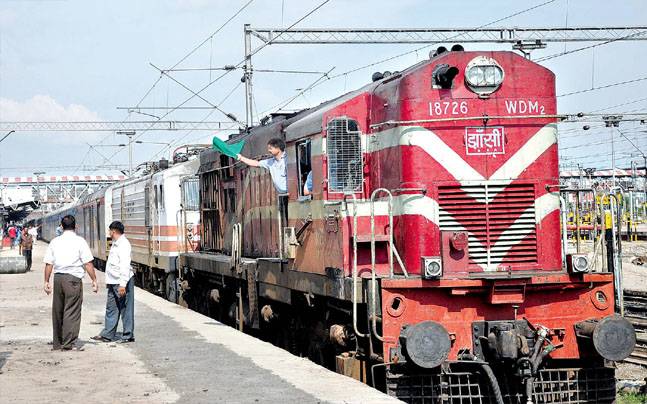TRACTION RETURN CURRENT

Indian Railway Technical Bulletin published quarterly by the Executive Director (
Technical Notes
Return Current is always a matter of greater concern for traction engineers due to it's direct impact on healthiness and reliability of the protection system. There are various techniques being used by traction engineers for ensuring proper current collection through rails and Mother Earth to feeding transformers with minimum impedance path. To understand this at first the behavioral analysis of traction power supply system is to be done during operations.
A study of Czech Republic
The Indian Railway AC Traction Manual popularly known as ACTM also describes it’s system configuration, maintenance and various checks. ACTM Vol -1 para 10203 describes the return path traction system and it’s connection with the neutral common current collecting bus popularly known as Buried Rail. Similarly ACTM Vol-1 para 10702 mention about challenges and precautions involved in it’s maintenance. ACTM Vol-II Part-II para 7.2 deals with the general arrangement.
It is worth to mention here that since all the system current either returns from Rails, Return conductors or Mother Earth finally passes through this ground potential common bus and due to continuous passage of large current it encounters very high corrosion rates. Any corroded joints or disconnections will result high resistance in the complete traction distribution circuit will result poor protection system as protective system is designed to identify particular impedance pattern and resulting non tripping or delayed tripping in distance protection zone.
Normally it is the myth among the traction professionals that the earthing and bonding at intermediate various Sub sectioning and Paralleling post has nothing concerned with the return path system. Yes it is true at the some extend at various plain areas where soil resistivity is quiet low and give easy passage the traction return current to Mother Earth for it’s smooth passage at various opportunities available at various points of system earthing. However we never find the current tends to zero through this if load is available in the sub sector and rail is properly connected with the combined earth system of the post.
However situation takes a sharp change when we enters the rocky areas and needs to having a great effort to push the return current to Mother earth by provision of good quality of earthing. The return current rises to 100A-200A under loaded condition of OHE and perhaps it was the main reasons to increase the connection cross section area by MS flat by amount 60 Sq mm for better current collection in the revised specification. Traction Engineers should be quite careful to periodically check the connections with current dynamics under loaded condition for better in depth study of condition monitoring of their system which they own for it’s maintenance.
Typical Earthing layout of Sub sectioning and paralleling substation of latest design having higher cross sectional area of MS Flat.
Indian Railway
Typical earthing layout of Sub sectioning and paralleling substation of earlier design used lower cross section MS Flat.
Technical Notes
Typical earthing layout of Sub sectioning and paralleling substation of earlier design used lower cross section MS Flat.
Why Technical Notes
However as situation warrants the earthing system of switching and paralleling post also included the concept of Buried Rails there also after thinking about strengthening of return path system and provision of better opportunities to return current to push into Mother earth the most effective and reliable way of return currents in traction distribution system.
TI/IN/0032 deals with the Buried Rail provisions in system earthing of various Switching posts.
NOTES



METROLINX An agency of the government of Ontario, Toronto report on Conceptual Design of Electrification System highlighted these aspects in their report on the mentioned topic.

Your Dream Vacation is Here
Enjoy Some You-Time
Government of New South Wales, Australia report on traction return system estimated the rate of corossion in buried rail return system is in the line of 9Kg of steel per Ampere year due to process of electrolysis on this.
Typical study of Netherland on traction return current and it’s distribution.
Measurements on Traction Power Supply system – A typical study at Benelux Union ie. mainly Netherland and Luxembourg
The current through the earth, characteristic of all 25 kV systems using “earthed rails” is depended on the kind of traction system used. For an AT-system values of 20% are found, while the corresponding value for the RT-system is up to 40 %. When distances between AT-locations are limited, the current returning through the earth, can be kept small.
However the distribution of return current depends primarily on the traction system being used. Also spacial distribution of traction return current depends upon the position of vehicle, position of AT and availability of bonds. The following study on this having 2x25KV traction system with AT has carried out Genova, Italy.

Distribution of traction return current in an Electric Railways system. study the distribution of traction return current in Auxiliary Transformer system.
However most interestingly one detailed study on traction return current established that a certain amount of return current flows through metallic wagons and resulted into corrosion at couplers of the wagons.
